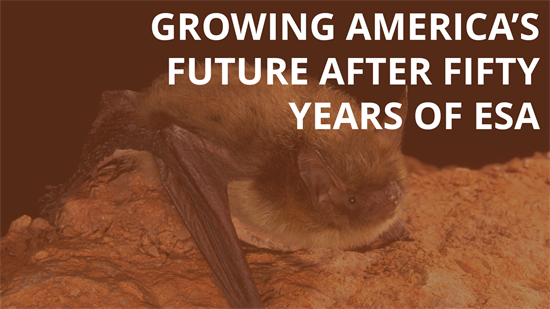BRANDED: Growing America’s Future After Fifty Years of ESABy Congressman Mike Flood (NE-01)
Washington,
May 22, 2023
Growing America’s Future After Fifty Years of ESA By Congressman Mike Flood (NE-01) December of this year will mark the 50th Anniversary of the Endangered Species Act (ESA). For most Americans, this anniversary may come and go unnoticed. Some may see a social media post in passing and others may come across a snippet of a cable news special highlighting stories of wildlife that have been, often rightly, saved from extinction. But few Americans will see media highlight this anniversary or, more broadly, the untold story of the sudden shift our country has experienced under the Biden Administration and their new approach to environmental policy. From President Biden’s 30 x 30 land grab to delayed projects due to long National Environmental Protection Act (NEPA) reviews, he has extended the scope of the federal government’s reach on environmental policy, impacting our communities and our country’s ability to grow. Nebraska has long been on the front lines of NEPA’s impacts over the course of a decades-long expressway program linking the state’s major cities. Under the Obama Administration, the length of time for NEPA reviews climbed from 3.4 years in 2010 to 5.2 years in 2016. President Trump rolled back red tape, but President Biden has brought back expanded requirements. And we’re only just beginning to see the downstream effects. On November 29, 2022, the Biden Administration finalized a new rule classifying the Northern Long-eared Bat as “endangered.” It had previously been classified as “threatened” under the ESA. This designation was not driven by science. A fungal disease, not human development, threaten the bat’s future. Nevertheless, a new ESA designation triggers reviews under NEPA and has an immediate impact on infrastructure projects. In the case of the Northern Long-eared Bat, it will impact Nebraska’s ability to move forward on road, bridge, and other transportation projects. The reason why? Previously, new projects could not remove trees in the months of June and July to protect the bat. Now that the bat is listed as “endangered,” trees cannot be removed from April until November, severely constricting the timeline for preparing areas for work. Even boards on existing bridges will need removal prior to April now – because of the possibility that bats may live behind them. At least one county in my district has already let me know that this may cause delays for projects. And it’s easy to see why: The Biden Administration is tying the hands of local governments on infrastructure projects by requiring them to make preparation for a construction season sometimes months before a project may be ready to launch. This bat is certainly of some value to our country and the biodiversity of our ecosystem. We must, however, find alternative ways to provide for the future of species that are endangered or threatened without using methods that curtail our economic vitality. We cannot turn communities across our country into protected habitat. Such an approach is prohibitive to growing the future of America and building the infrastructure we need to connect our communities. To this end, there is an increasing bipartisan consensus that our country needs environmental permitting reform. Earlier this year, I supported permitting reforms in H.R. 1, and am pleased that reform is at the center of talks about the debt ceiling. Finding a way forward that cuts red tape and ends delays will help America grow our future for the next generation. |
Stay Connected
Use the following link to sign up for our newsletter and get the latest news and updates directly to your inbox.


